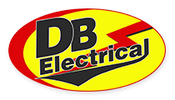The belts that drive the engine and mechanical functions in your outdoor power equipment might seem like an afterthought – all until the day they start to slip or worse yet break. Belts are something that require periodic replacement. If you haven’t done so recently, you might want to check the condition of the belts in your riding mower, lawn tractor and other outdoor power equipment. If you see signs of cracking, separating or glazing, it’s best to replace the belts now.
When you shop for belts, you will encounter several terms to describe them. Different types of belts are needed for various applications. Here is a quick rundown of common terms used for belts.
Belt types commonly used in outdoor power equipment.
Covered Belts
Belts that have a protective exterior layer so that you can’t see the cords are referred to as either covered or wrapped belts. As you might expect, the protective covering helps reduce wear on the belt and shields it from oil and solvents to extend its service life. However, there is another benefit that at first may seem counterintuitive. A covered or wrapped belt allows for some slippage. You might ask why you’d want slippage to occur. These belts are typically used on deck applications. On a mower where the blade may hit a rock, tree stump or other hard object, a bit of slippage will reduce potential damage from the sudden jolt.
Raw Edge Belts
Just the opposite of covered belts, raw edge belts do not have a protective wrap shielding the cords. These belts are designed to not to slip. On a mower or lawn tractor, they are used for powertrain applications to keep wheels in motion, even when the equipment is riding over wet grass or slick surfaces. Raw edge belts grip surfaces better than covered belts, and they can transmit more horsepower.
Cogged Belts
Similar to raw edge belts, cogged belts resist slippage. They feature a series of perpendicular slots that run the length of the belt. The design of cogged belts allows for cooler operation, which leads to longer service lives. For outdoor power equipment, cogged belts are often preferred for zero-turn applications. These belts also require less adjustment and re-tensioning over their lives.
V-Belts
The V-shape uses the mechanical properties of a wedge, which enhances both tension and power. V-belts can operate at high speeds while exerting significant pulling power. The construction of V-belts consists of alternating layers of a rubber compound and cords. V-belts are available in both covered and raw edge versions.
Double V-Belts
These belts excel in applications in which the belt must make tight turns while also maintaining contact with the bearing surface. Abrupt directional changes due to tight turns can place high stress on belts. Double V-belts are made to withstand the additional stress that comes from challenging forward and reverse bends. Double V-belts are also available in both covered and raw edge versions.
Choose the right belt for outdoor power equipment.
You want to make sure you get the correct belt when buying a replacement. Knowing common terms for engine and mechanical belts helps you understand what to ask and what to look for when shopping for belts. As in everything, knowledge is important.


